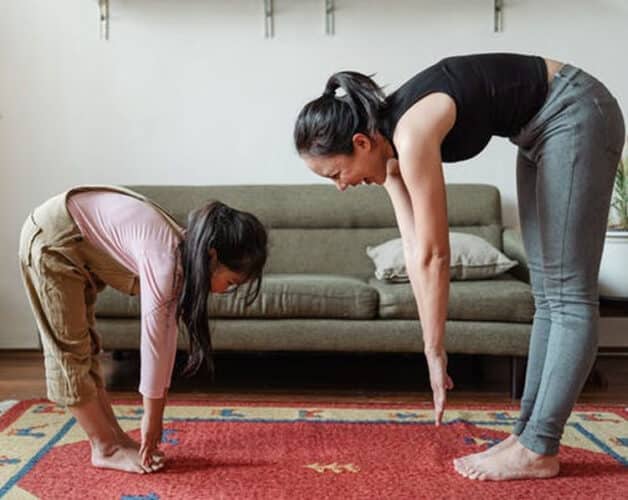
Accompanying your kid for an exercise
Physical activity is essential for physical and mental health. However, to reap all the benefits, it must be done with excitement. So, what if your child does not like working out? It is necessary to find out what is at the basis of his refusal. Has the child ever had a bad experience? Does the chosen activity suit his personality? The solution is not the same for everyone says NPTI Florida owner Patrick Sherman. Read on to learn more about workouts for kids.
Why Do Some Children Do Not Like Physical Activity?
Some children are naturally more athletic than others. However, everyone can find an activity that will suit them. If your child is reluctant to play sports, try to find the cause of the lack of enthusiasm.
- Is the environment too competitive?
The child may feel compelled to be the best, to win, or to fear the performance expected of him. This pressure can come from his parents and his group or the coach of his sports team. - Is he afraid of rejection?
If he feels incompetent in the sport he plays, he may lose self-confidence and feel devalued. This may be the case, for example, if he is always the last chosen on a sports team. - Does he need more support?
The child may need the attention and encouragement of his parents to be confident. - Does the chosen activity suit the child’s temperament and abilities?
Depending on their personality and skills, a child may feel more comfortable in a team sport (hockey, baseball, basketball, soccer) or an individual sport (yoga, fencing, judo, karate, cycling). They may prefer short but intense activities (making relay races or sprints, for example) or endurance sports (swimming, short-distance jogging, or cross-country skiing). - Is the level of difficulty of the activity appropriate?
To be stimulated, a child needs a challenge at his height. If the challenge is too easy or, conversely, too difficult, he will lose his motivation.
How Do You Encourage a Child to Go for a Workout?
Sport strengthens important parts of the body (heart, lungs, bones), reduces disease risk, and improves mood. It is therefore important to get your child used to be active from an early age.
If you want to encourage your child to move, remember that he must have fun. Suggest a few activities to him, but let him choose the one he prefers. Make exercise part of your daily routine as well. Allowing him to try different sports is also a good way for him to find out his tastes.
- Choose activities that are appropriate for your child’s age and personality. While some like combat sports, others prefer running or ball games. If your child doesn’t like a particular exercise, don’t push it. With his help, find another activity that suits him better.
- Do physical activities with him for the pleasure of having a good time together and to encourage him to move.
- Give more importance to cooperation than to competition.
- Help your child tame failure. Remind him that exercise is, above all, a game.
- Limit the hours allowed for television and video games. Allow time for your child to play free activities outside and participate in sports.
- Encourage your child to participate in the house chores and make the activity part of his daily life. For example, ask him to carry light grocery bags, help with tidying up, walk with you to school, or take the stairs.
Starting From an Early Age: The Development of the Child from 5 Years Old
From 5 years old, if he/she moves regularly, the child should master basic skills such as running, throwing, catching, jumping. After that, its growth and evolution will continue to progress.
Between 6 and 9 years old, his/her balance improves. The child begins to learn more complex skills, such as throwing farther. It better assesses the speed of objects but not yet the direction of their trajectory. It is also difficult for him to evaluate several details at once to make a decision quickly. Since his/her attention remains short, the instructions should be brief and the rules flexible.
In addition, it is important that a child engages in a wide variety of physical activities. This will allow them to develop a solid foundation for all motor skills such as balance, throwing, catching, jumping, swimming, and running. Studies have shown that children who specialize in a sport at a young age perform less well than others as they grow up because they do not develop all of their motor skills
According to fitness training coaches as observed at the edge of football fields the major role of parents in the sporting practice of their children. By comparing my experience of training high-level players, my role as a dad, and my knowledge of children’s sports development, I was able to identify 3 main phases for the dad-educator.
1. From 0 to about 7 years old: play freely
Must laugh, not train. The notion of pleasure is fundamental. A young child who is never having fun gets bored in no time. So, let us play ball, let it go, don’t try to explain rules that go way over the child’s head. Catching by hand, rather than playing with the foot, is not an obstacle to the learning of a future footballer. On the contrary, it is an important stage in the construction of its motor skills.
It Takes Everything to Make an Athlete
The only “constraint”: vary the pleasures as much as possible. All ideas are good. With or without a ball, climb, catch, roll, fall. Play ball standing, sitting, lying down, etc. A rich panel of activities nourishes the psycho-motor development of the child.
And let’s not see all these games as acquisition activities but really as games: for crossing the river of crocodiles, it is better to mimic the dangerous reptiles without a second thought than to assess the corner of your eye the ability to balance of the child. Everything is learning in the child. The acquisitions are real and impressive. You might as well not risk breaking the mood with a checklist of skills to acquire.
At the Age of Training, Lay the Foundations
It is often around the age of 7 that the notion of practice appears and that the child changes from “daddy, are you coming to play with me?” To “are you making me workout?” ” He then begins to take pleasure in succeeding, to want to succeed again. It was then that the urge to rehearse settled in some children. Once the child is willing to practice, it’s up to you to focus their rehearsal and correction efforts on the matter’s actions.
Lock that Peg
The basis of all football kicks is a well-locked ankle. If the ankle is loose, the kick is less effective, and the injury quickly occurs.
Train Both Feet
If your child makes any progress in their football career, their ability to play with both feet will do them much-needed service. Starting at a very young age to integrate the idea that the “other” foot can also have its uses cannot hurt.
If the message is difficult to pass, do not hesitate to show him the famous goal “right foot pushed back, left foot” by Pogba against Croatia.
The Pass Before the kick attempt
A big soccer skill set. This is what your child is most likely to want to practice. However, before shooting a soccer ball on a goalkeeper, you must have gained the upper hand with an effective passing game.
Before you want to develop your power, it is necessary to refine the passing prior to kicking. Just as one learns to walk before learning to run.
For the Rest, Adopt the Correct Distance
Watching your kid evolve on the training field over time is exciting. We as parents must be careful that our reactions do not have a counterproductive effect on our children.
Relax
As a parent of an athlete is extremely emotional at times. Parents must keep calm not to stress their athletes.
Congratulate the Commitment
The strong moments of the game (a good pass, an impressive run, a kick, a goal, etc.) are the reward for a prolonged commitment. Try not to focus your attention on the good moves but rather to comment on the quality of your child’s engagement during the game.
Remember that Athletic Journey Needs Time
The road to professional athlete is long. From experience, going through the stages that lead to athletic success is complex and involves difficult and sometimes risky choices. But, whatever the objective and the final result, a course of sporting excellence will be rich in lessons. To know how to force oneself to training and to set rules to accomplish performances? Don’t tell me you don’t want this for your kids!

